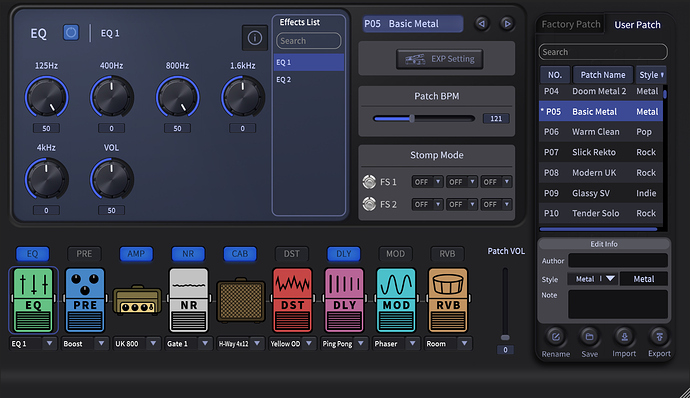A few weeks ago I got a new guitar, an ESP E-II M-II. It has Bare Knuckle Aftermath pickups, which are quite high output.
When I plugged into my GT-1000 all my patches had way too much gain, like serious amounts of fizz. My last guitar had single coils so it was obvious this was the reason and it was an easy enough fix. However, it got me thinking about gain levels.
I was then listening to the Racer X albums Second Heat, Live Extreme Volume I and II, and Street Lethal and you can tell that both Paul Gilbert and Bruce Bouillet aren’t using a ton of gain on these. I don’t know how they’re getting all the sustain - sheer volume or some compression too?
When I play with reduced levels of gain all the inconsistencies in my playing are magnified! Every little mis-fingered note juts out, every weak hammer-on sounds bad.
I was watching some jazz guys on Soundslice. Even when they were playing unplugged, on semi-acoustic guitars, you could hear every single note very clearly. It made me jealous how they were shredding with a clean sound.
I’m looking for some advice, how do I dial up a tone that is ballsy and has sustain, but will help help me to improve my articulation? Should I aim to use a compresison or some kind of a booster? I have a GT-1000, so my options are pretty much unlimited.

 - like this:
- like this:



